What Hi-Fi? Verdict
Cutting edge technology helps the QE65QN94A deliver the most spectacular all-round picture quality we’ve seen on a 4K LCD TV
Pros
- +
OLED-baiting black levels
- +
Awesome brightness and contrast
- +
App-packed and user-friendly
Cons
- -
Expensive
- -
Some backlight instability
- -
No Dolby Vision or Freeview Play
Why you can trust What Hi-Fi?
Things get pretty complicated in the upper echelons of Samsung’s 4K LCD TV range. All sorts of small model number differences turn out to hide some actually pretty major differences, and Samsung also muddies the waters by giving the same models different model numbers in different territories.
Our first job with the 65-inch QE65QN94A, then, is to try and define how it differs from the QN95A above it and the QN90A below it. The main difference between the QN94A and QN95A (we’re talking UK ranging here) is that it uses connections built into its bodywork, rather than an external One Connect box. This doesn’t just mean you might have more cable spaghetti to worry about, though. For while the QN95A’s One Connect carries four HDMI 2.1 ports capable of handling the 4K at 120Hz and Variable Refresh Rate (VRR) graphic features from the PS5, Xbox Series X and high-end PCs, only one of the four HDMIs built into the QE65QN94A can handle the full gamut of new gaming features.
Then there's the QN90A which, in the UK, shifts to an IPS type of LCD panel for all screen sizes bar the 50QN90A, while the QN94As use higher-contrast VA panels. The QN94As boast Samsung’s premium Ultra Viewing Angle Pro technology, while the QN90As get a less robust wide viewing angle system. The QN94A’s get a more powerful audio system with more built-in channels than the QN90A’s too, and finally, from the 50-inch model down, the QN90A delivers a peak claimed brightness of 1500 nits versus the 2000 nits across the range on the QN94As.
In summary, the QN94A is a QN95A without the One Connect box, and that means it should have better contrast, better viewing angles and better sound than anything lower down in the company’s range. Assuming you can do with just one HDMI 2.1 socket, it could well be the pick of Samsung’s 2021 TV range – but is it?
Price
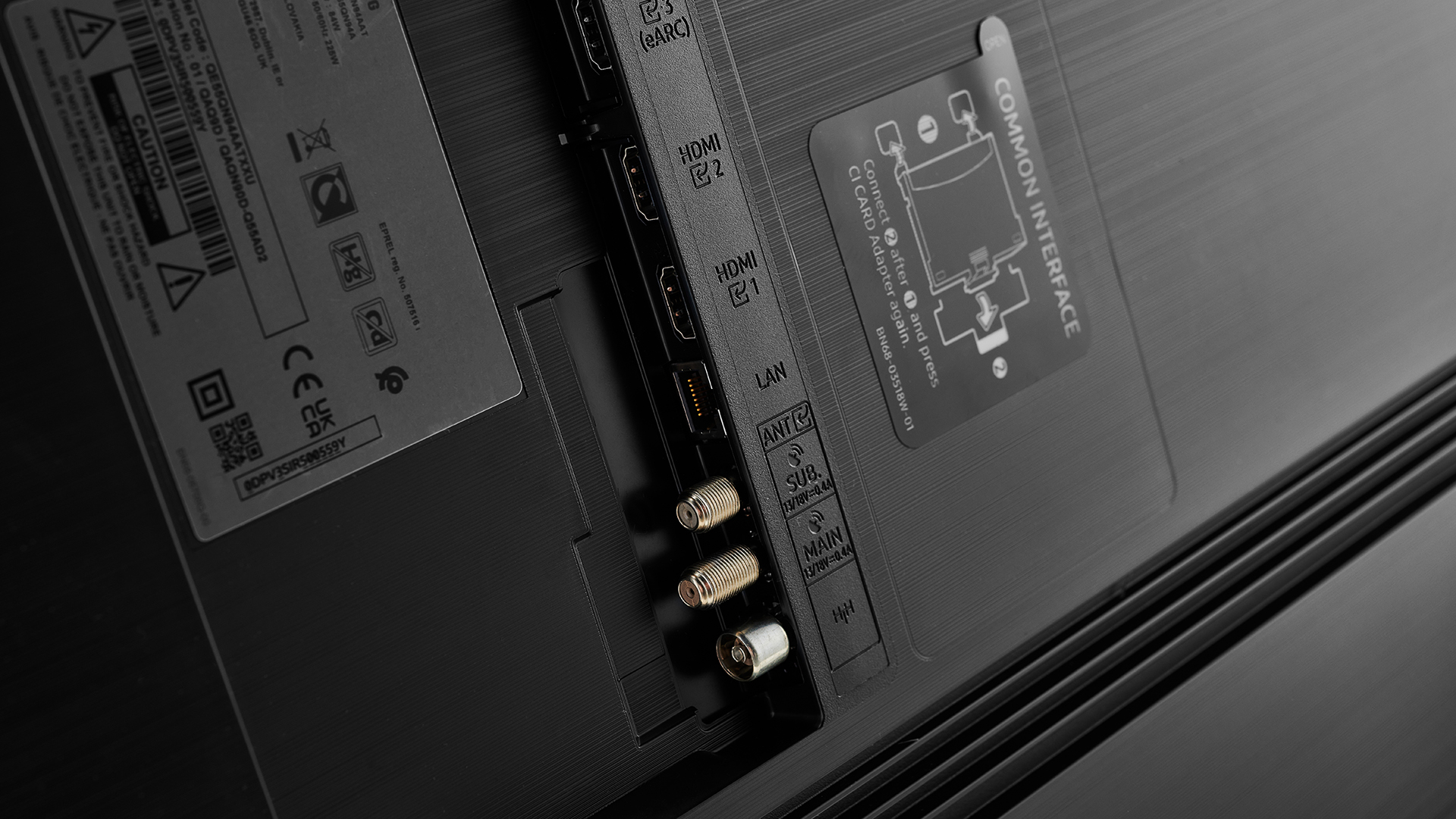
The QE65QN94A is a premium TV with a premium price. In fact, at the time of writing its £2099 price makes it £300 more expensive than both LG’s OLED65C1 and the Award-winning Philips 65OLED806. Given how impressive both of those OLED-based rivals are, this puts serious pressure on Samsung’s LCD model to perform.
Samsung can point to the QE65QN94A’s significantly higher claimed peak brightness than OLED can manage as a reason to spend the extra, but this will only count for something if the brightness is put to good use. Brightness for brightness' sake won’t cut it.
Design
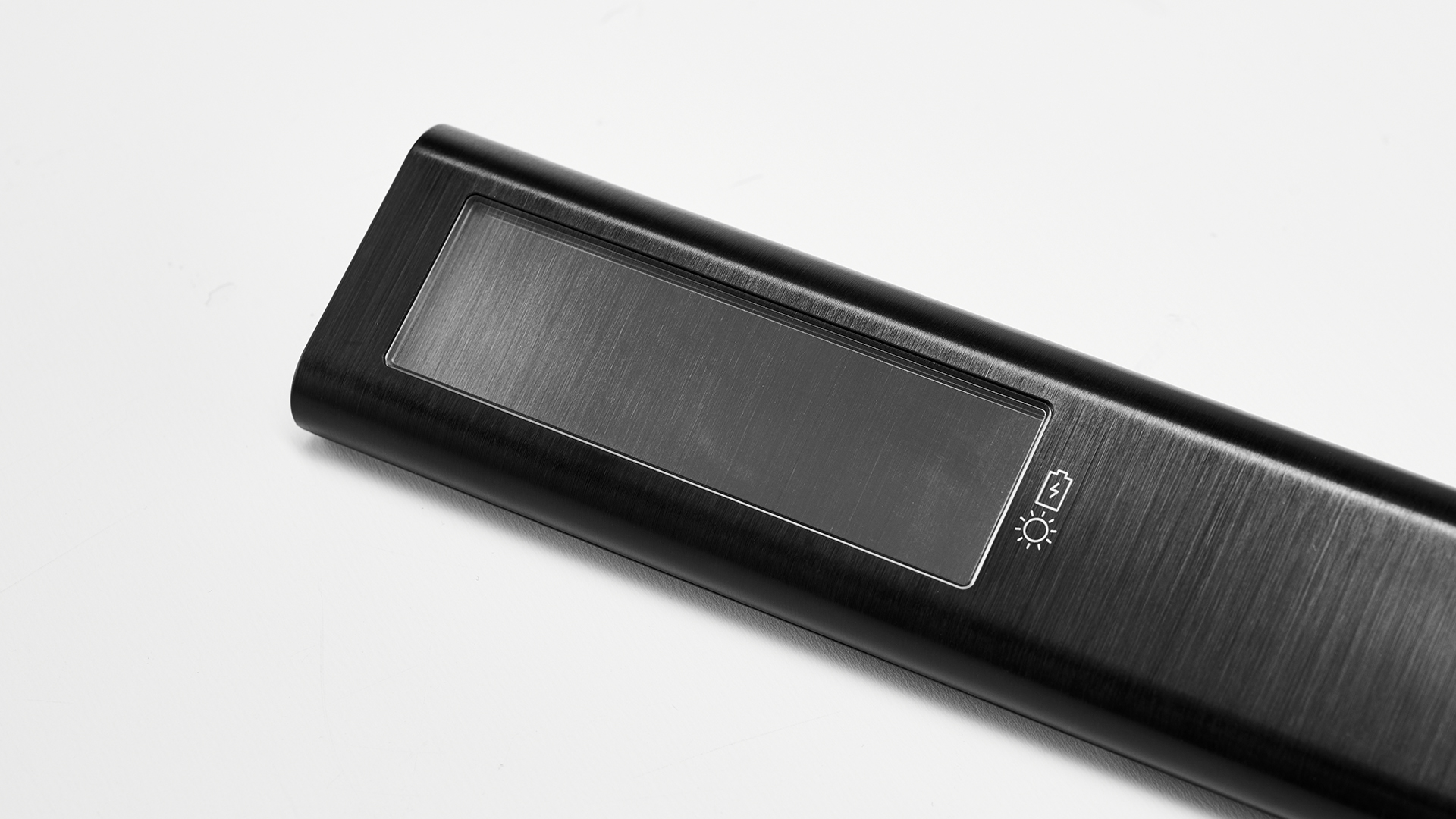
The QE65QN94A is a handsome TV – where handsome means ‘barely visible’. The frame around the screen is ultra-thin, drawing practically zero attention to itself when you’re viewing the screen straight on. The rear is startlingly slim, too, for a TV that uses direct lighting (where the LEDs are positioned directly behind the screen rather than around its edges).
The rear is as flat as the front, too, creating a cool monolithic feel, and making it ideally suited to wall hanging. Though if you’d rather stand it on a piece of furniture, it sits very stably (after a rather fiddly assembly process) on an ultra sturdy metal mount.
If you’re fed up with your TV turning into a gaping black hole in your living room when it’s turned off, you should check out the QE65QN94A’s Ambient mode. This lets you replace the ‘standby’ screen with any of a huge range of digitised artworks, videos or animations, all played using the bare minimum of power. You can even display your own photographs if you like.
One final cool QE65QN94A design feature is the little solar panel built into the back of the smart remote control, making replacement batteries a thing of the past.
Features
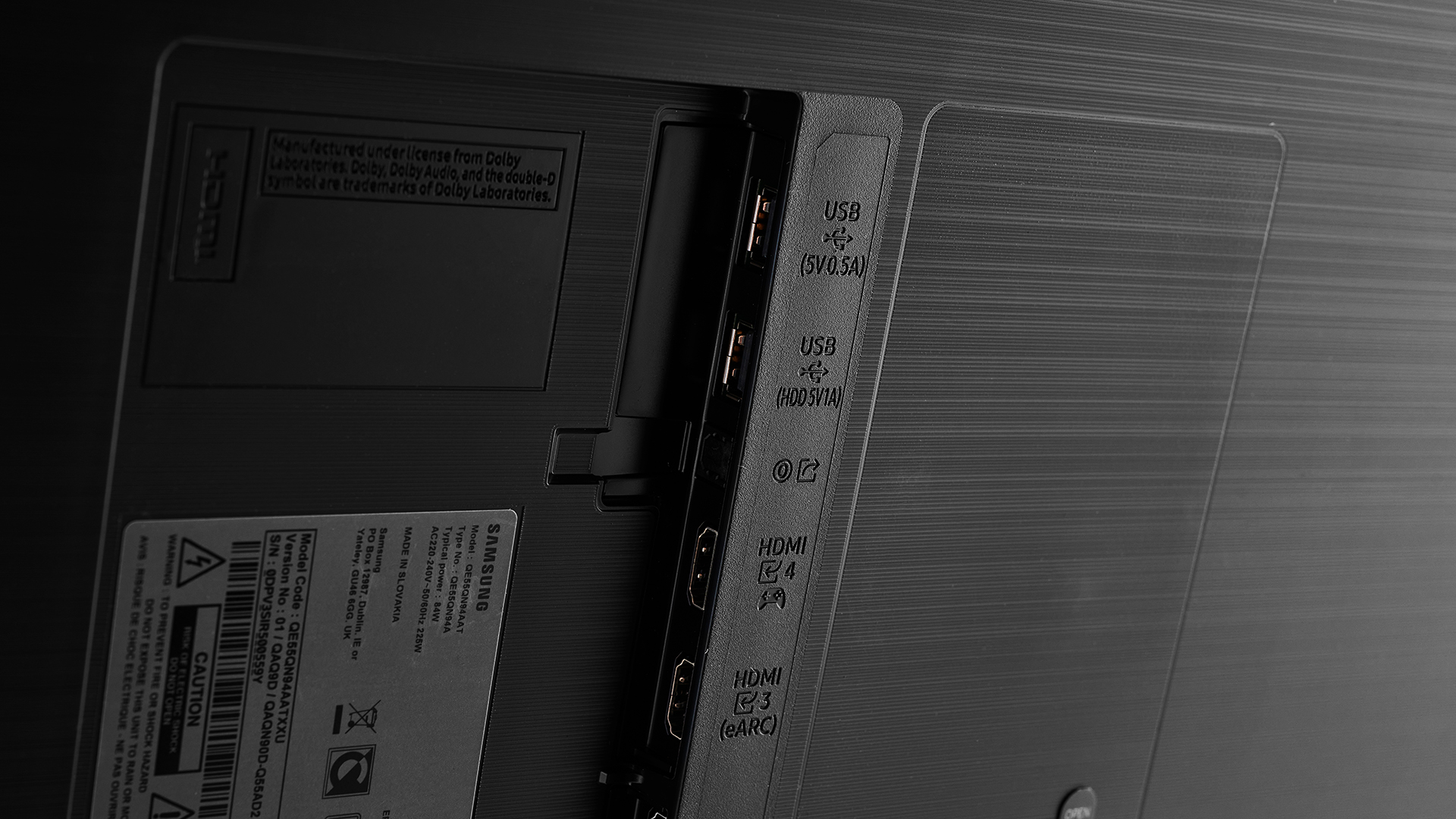
The QE65QN94A is a Neo QLED TV. This means that it uses Samsung’s new Mini LED lighting system, where the chunky LEDs of old are replaced by LEDs only around one fortieth of the size. This partly explains why the TV is so slim. Much more excitingly, though, it also allows far more LEDs to be packed into the same screen area, opening the door to much more local light control. Especially when powered, as the QE65QN94A is, by a local dimming system capable of simultaneously emitting different amounts of light from a massive 792 separately controlled dimming zones.
The brain power behind this bold new Mini-LED lighting system is Samsung’s latest Neo Quantum 4K processor which, as well as analysing incoming images to figure out how to best illuminate each separate section of the backlight, can also route power more intelligently to different LED ‘zones’ to further boost contrast.
The Neo Quantum processor also specialises in upscaling, using AI/machine learning to add the millions of extra pixels needed to turn HD and SD into 4K more intelligently.
The QLED part of the QE65QN94A’s Neo QLED branding alerts us to its use of Quantum Dot colour technology. This will hopefully enable its colour range to keep pace with the 2000 nits of peak brightness Samsung claims this model can achieve without colours starting to look washed out even in the brightest HDR imagery. The Quantum Processor 4K drives a wide angle viewing system, too, which means you can watch the set from a wider angle than usual with LCD technology without colour or contrast fading.
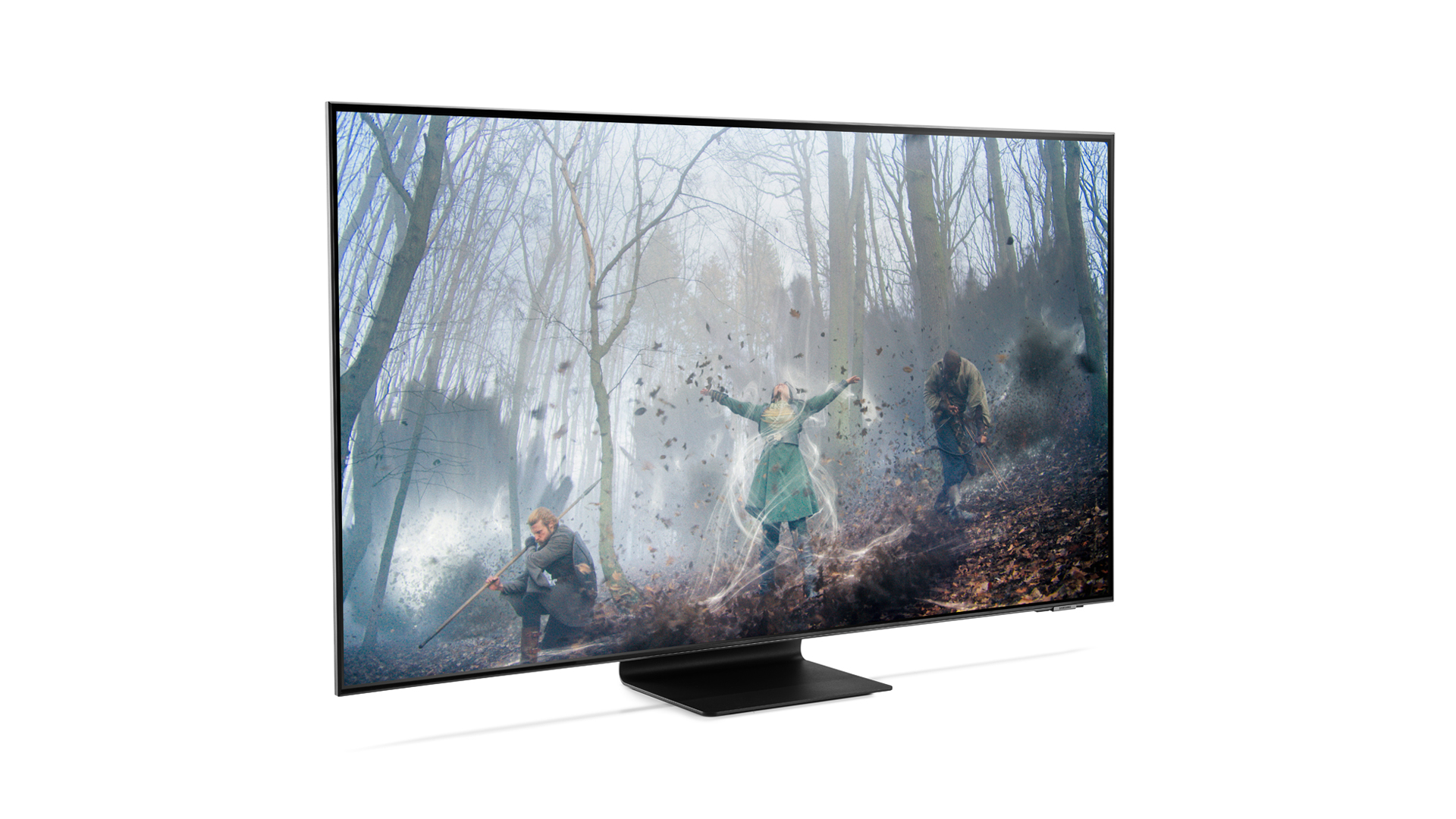
Screen type QLED
Backlight Mini LED
Resolution 4K
Operating system Tizen
HDR formats HDR10, HDR10+, HLG
HDMI x4 (1x HDMI 2.1)
USB x3
Optical x1
Dimensions 83 x 145 x 2.6cm
The QE65QN94A’s smart features are built around Samsung’s Tizen-based Eden system. This impresses with the number of content apps it carries, the economy and slickness of its interface, and its voice recognition support. It doesn’t support Freeview Play or YouView, it should be said, nor does it support Dolby Vision streaming from those services that carry it, for the simple reason that the TV doesn’t support Dolby Vision at all. Dolby Vision sources play in the basic HDR10 format, without Dolby Vision’s extra scene-by-scene image data.
The lack of Freeview Play and YouView is a shame, but it’s worth noting that all of the catch up apps for the UK’s main terrestrial broadcasters are available as individual apps – and given the issues Sony and LG have faced with recent TV ranges by failing to strike deals at the last minute with YouView and Freeview Play, maybe Samsung’s preference for doing separate deals with the broadcasters isn’t necessarily such a bad idea.
The lack of Dolby Vision support is more disappointing. Especially now the format is available for Xbox Series X games. Samsung would presumably argue that its own dynamic tone mapping processing for dealing with HDR reduces the need for Dolby Vision – especially on a TV as high-end as the QE65QN94A. Such ‘logic’ is undermined rather by the QE65QN94A’s support for Samsung’s HDR10+ system which, like Dolby Vision, adds extra scene-by-scene data to the HDR stream. There are also an increasing number of TVs out there that simply support both HDR10+ and Dolby Vision, so the consumer doesn’t have to worry about any potential ‘format war’.
The QE65QN94A’s connections are a mixed bag, as noted earlier. On the downside is the presence of just one fully fledged HDMI 2.1 port. On the plus side, the now-expected support for wireless streaming of media via wi-fi and Bluetooth stretches to ‘Tap View’, where owners of recent Samsung phones can simply tap them against the TV to establish a content-sharing connection.
Looking past the single 4K/120Hz-capable HDMI, the QE65QN94A’s gaming appeal is given a major boost by the fact that it keeps input lag down to just 10.1ms in its Game mode, and even supports the SuperWide aspect ratio options available with some PC games.
The QE65QN94A’s potent picture features are backed by a promising audio system, too. This uses eight different speakers arranged around all sides of the TV’s frame to deliver Object Tracking Sound+ – a proprietary Samsung system designed to create both a wider but also a more detailed soundstage into which specific effects are placed with more precision.
If you partner the QE65QN94A with a recent compatible Samsung soundbar, meanwhile, you will also be able to combine the TV’s speakers with those in the soundbar to deliver a bigger, more detailed ‘wall of sound’.
Picture
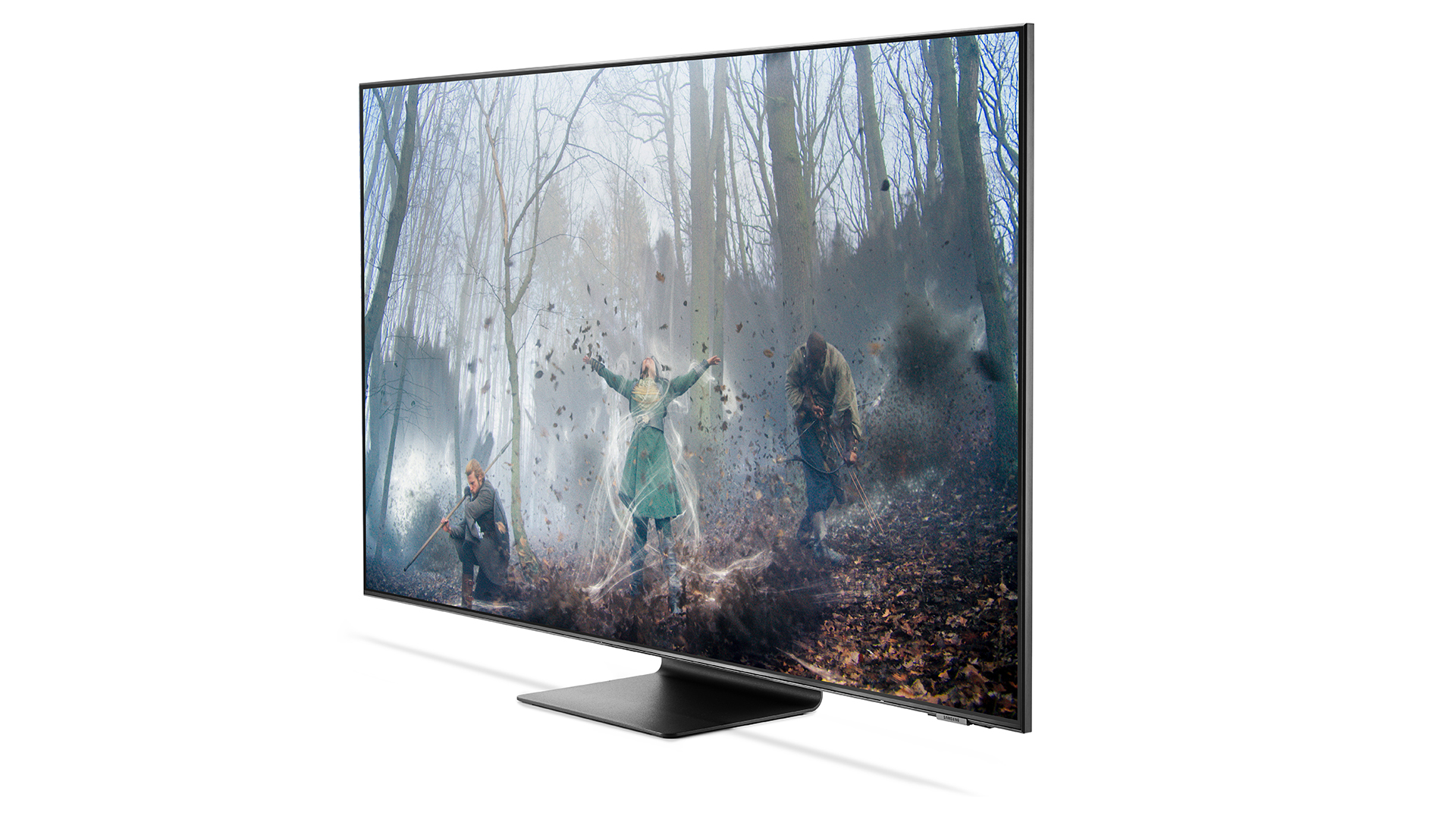
If you like your HDR playback bright and in your face, you won’t find a 4K TV out there right now that’s more satisfying than the QE65QN94A.
Bright HDR scenes look explosively vivid, erupting off the screen with an intensity that delivers the upper end of HDR’s expanded light range more emphatically than any other TV in its class bar its own QN95A sibling. During shots of sunny exteriors the image thus feels more like you’re looking out of a window rather than looking at a TV screen, while direct shots of the sun are so vivid that you almost feel like you can feel the heat in your living room.
The QN94A’s class-leading brightness levels are partnered with a colour range that won’t quit. Samsung uses metal-clad Quantum Dots in its Neo QLED TVs, since these can be driven harder/brighter without becoming unstable. This results in a massive colour volume (the combination of brightness and saturation) that marries perfectly with HDR content’s extra brightness and wider colour range.
In fact, colour saturations even in the very brightest areas look as fulsome and rich on the QE65QN94A as we’ve ever seen them, reversing the slight slide in vibrancy that has been noticeable with Samsung’s high-end TVs for the past couple of generations.
OLED TVs are capable of delivering beautifully rich colours too, of course, thanks to their stellar contrast performance. No OLED TV we’ve seen, not even models that use the latest higher-brightness panels can get close to the sort of raw brightness and attendant colour volume the QE65QN94A can achieve.
Not that the QE65QN94A is just a ‘light cannon’. It’s also capable of producing some of the deepest and most consistent black levels ever seen from an LCD TV. In fact, for much of the time its black levels challenge those of OLED TVs, reproducing the darkest parts of even HDR pictures with scarcely a hint of the grey clouding or mist over them that we’d expect to see with LCD technology.
This black level prowess would be remarkable enough even if the QE65QN94A’s pictures weren’t also capable of being spectacularly punchy. That dark areas look so good on such an unapologetically bright screen is almost hard to believe.
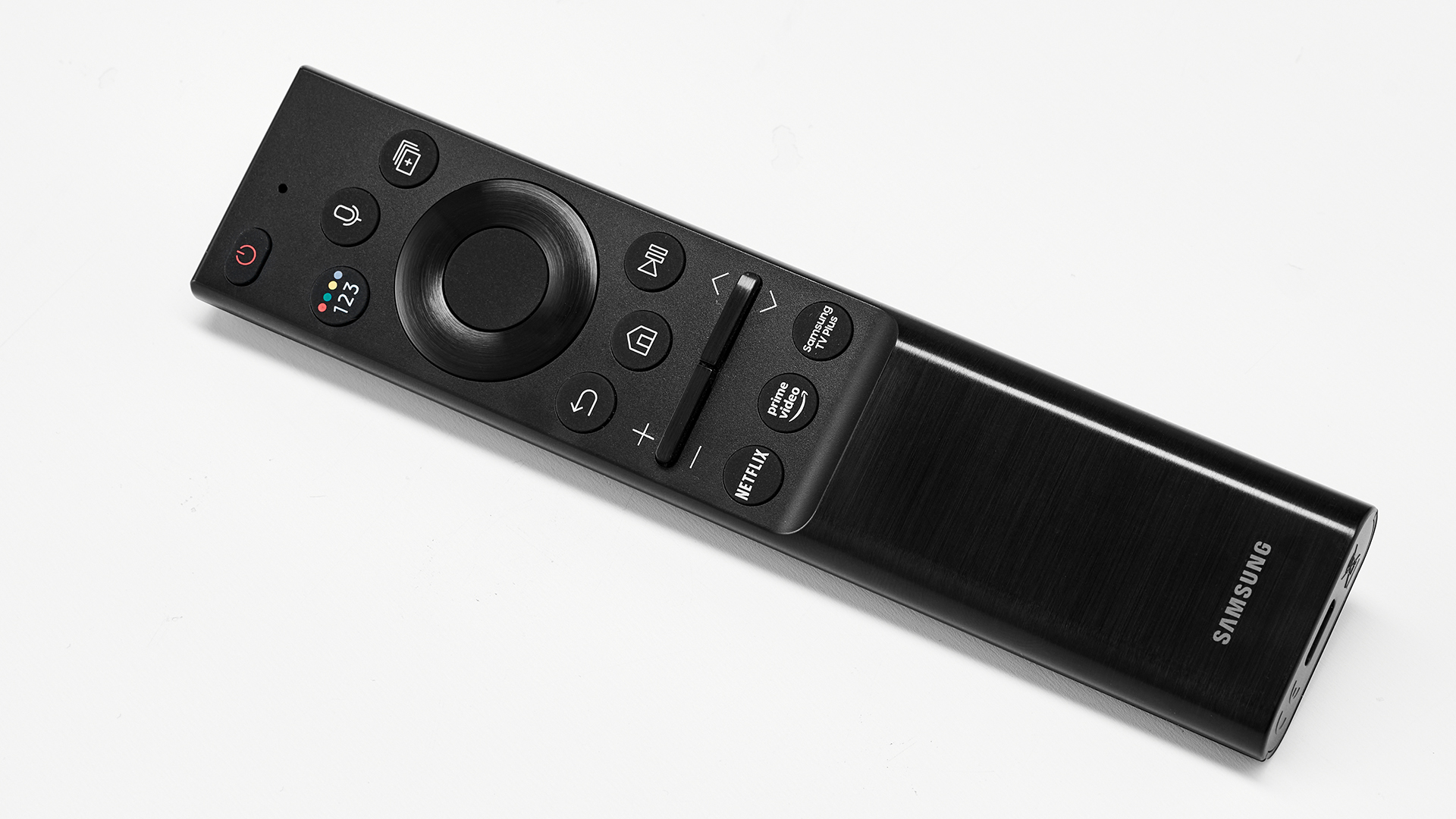
Things get a bit more complicated when it comes to HDR images where extremely bright highlights appear against very dark backdrops. Something like a brightly lit window against a night sky, for instance. On the one hand, the huge number of dimming zones enabled by the QE65QN94A’s Mini LED technology helps it deliver small bright highlights with more punch than they get on Samsung’s step down Neo QLED models. And much more punch than they get on Samsung’s previous non-Mini LED TVs.
On the other hand, the QE65QN94A does still noticeably dim down highlights in extreme contrast HDR pictures – presumably in a bid to reduce the possibility of the backlight system causing halos of unwanted light to appear in the darkness around the bright objects. This certainly works; signs of backlight blooming really are incredibly rare by the standards of LCD TVs with direct dimming. But the attendant dimming down of bright highlights in some shots is a price you have to pay for such consistent black levels, that you don’t have to worry about with self-emissive OLED TVs (though don’t forget that those OLED TVs can’t get as bright as the Samsung can with bright HDR images).
Very dark scenes can look a little hollow in the QE65QN94A’s default and in many ways most alluring Standard picture mode, thanks to the way some subtle shadow detailing can be lost in the darkness. There is a dedicated shadow detail adjustment that can help, but you can’t really push this more than one or possibly two levels above its default zero point without it also having an unwanted impact on bright parts of the picture.
The QE65QN94A’s Movie and Filmmaker Modes (the latter of which has been calibrated by the UHD Alliance) dim high-contrast HDR peaks less aggressively than the Standard mode, and suffer less shadow detail loss. These modes also substantially reduce colour punch and the overall sense of contrast, though – albeit in a way that tracks closer to the image values used when mastering most films and TV shows.
Getting back into wholly positive territory, the 65QN94A’s pictures are phenomenally sharp and detailed. A truly outstanding 4K experience that holds up well even when there’s motion in the frame. Just make sure you don’t stick with Samsung’s default ‘Picture Clarity’ settings, which tend to generate lots of unwanted digital side effects. Instead choose a Custom setting and set the blur and judder limiters to around their three or four level. Or you can turn the motion processing off completely without the picture turning into a blurry, juddery mess.
The extreme sharpness of the QE65QN94A seems to be down to a combination of the set’s Neo Quantum 4K processing, extreme colour range and refinement, and fine light management.
The quality of the latest AI-driven processor can be seen, too, in the set’s upscaling of HD sources. In the Standard picture preset this adds a remarkable sense of extra detail and pixel density to HD or even SD sources while simultaneously detecting and removing – or, at least, not exaggerating – any grain or noise a source might contain. Note, though, that in its Movie mode the upscaling adopts a much softer approach that personally we find hard to take after becoming accustomed to the sharpness of the Standard mode.
Finally, the QE65QN94A proves to be a spectacular gaming display thanks to its ultra smooth 120Hz and VRR motion handling, high brightness, bold colours, extreme 4K sharpness and fast input lag when running in its Game picture mode. The only pity is that all this gaming greatness makes us wish the full monty of cutting edge gaming features was available on more than one HDMI.
Sound
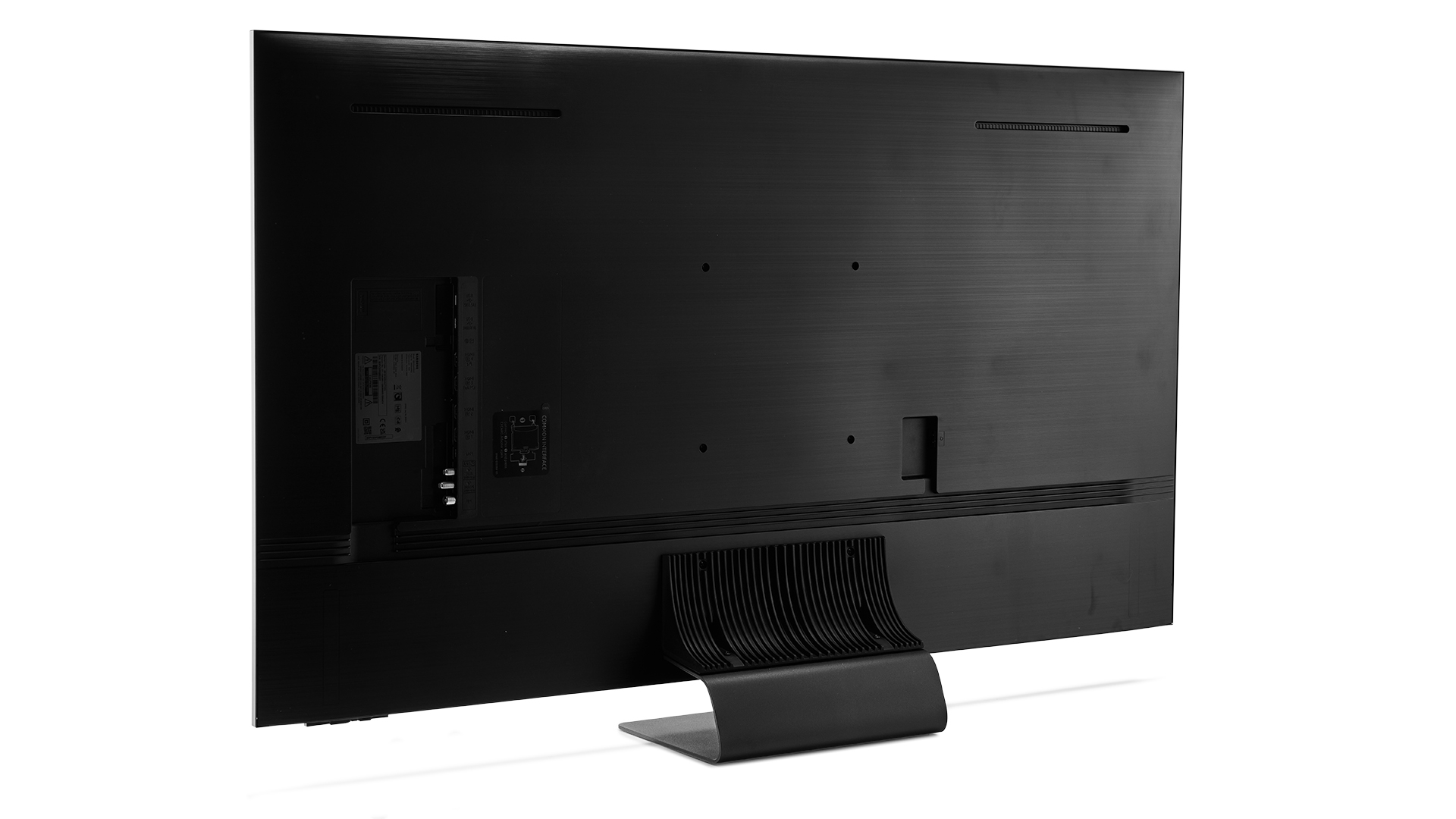
The QE65QN94A enjoys a strikingly fulsome sound. Its mid-range is expansive and fleshed out by more prominent, smooth, distortion-free bass than you typically hear from built-in TV sound systems.
The sound also projects well clear of the QE65QN94A’s bodywork in all directions, creating a satisfying and involving wall of sound. Especially as Samsung’s OTS+ audio system does an excellent job of placing specific effects accurately within that wall. So, for instance, voices seem to be coming from the correct part of the screen, moving vehicles sound as well as look as if they’re crossing the screen, and even off-screen action seems to be coming from the area in your room where you’d expect to hear it. Though to be clear about this, sound doesn’t venture down the sides of you or behind you; this is a detailed wall of sound with some depth behind it rather than an aggressively forward-projected experience.
It’s a pity given how sophisticated the QE65QN94A’s speaker arrangement is that it doesn’t carry Dolby Atmos decoding, and surprising to find its sound sometimes suddenly shrinking back rather than continuing to swell during the very loudest soundstage moments. For most of the time, though, it’s one of the TV world’s more satisfying audio efforts.
Verdict
The QE65QN94A proves once more the worth of Samsung’s shift to Mini-LED backlighting. Its combination of brightness, contrast and sharpness leads to the most all-round vivid and punchy HDR pictures the 4K world has to offer right now.
OLED TVs with their self-emissive pixels can still do local contrast more pristinely than even this Mini-LED hero can, of course. If you like your HDR bright and colourful, though, especially if you watch TV in a mostly fairly bright room, the QE65QN94A is an absolute beast.
SCORES
- Picture 5
- Sound 4
- Features 5
MORE:
Read our review of the LG OLED65G1
Check out our review of the Samsung QE65QN95A
These are the best 65-inch TVs 2021: the best big-screen 4K TVs you can buy
What Hi-Fi?, founded in 1976, is the world's leading independent guide to buying and owning hi-fi and home entertainment products. Our comprehensive tests help you buy the very best for your money, with our advice sections giving you step-by-step information on how to get even more from your music and movies. Everything is tested by our dedicated team of in-house reviewers in our custom-built test rooms in London, Reading and Bath. Our coveted five-star rating and Awards are recognised all over the world as the ultimate seal of approval, so you can buy with absolute confidence.

